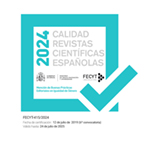Open Peer Review Vol.21 N.1
I Would Like to Rage
Chloé Galibert-Laîné
Section: Videoessays
Reviewer A:
Please, comment on the most relevant aspects (positive points and areas to improve) of the reviewed videoessay.
This is a very original and highly compelling videographic work about gender and the performability of rage in audiovisual media and social media contexts. It is a top-rate piece of performative research on a number of different levels. The conception, design, pacing and overall realisation of the work are all really excellent. This video works successfully across an affective spectrum running from the deeply personal, embodied aspects of what I presume are the author’s own performative appearances and restagings/mimickings, through to the socially resonant and wide rangingly applicable aspects presented in the desktop documentary quotations/captures from online media. The written statement successfully and eloquently grounds the work in a significant research context and makes it even more available than the video does on its own, to be taken up in its turn, in future, as an important contribution to that research.
Would you suggest any changes or make any recommendations to improve the quality of the videoessay?
No open comments
Reviewer B:
Please, comment on the most relevant aspects (positive points and areas to improve) of the reviewed videoessay.
The video essay explores anger starting from a paradox: how to talk about an emotion that the author admits to having difficulty expressing. This paradox is present in the very title of the video essay, borrowed from the polite expression—almost asking for permission—used in the TV show Critical Role: "I would like to rage." The author expresses that their video essay is a failed attempt to express anger, and instead opts for humor and irony to explore this emotion. Far from being a failure, the video essay results in a powerful inquiry into the multiple implications of this feeling in the public space, questioning what alternatives remain to express an emotion almost exclusively reserved for privileged groups. The video essay draws from personal experience and media analysis to explore anger from a performative perspective. The essay addresses identity, gender, and the digital expression of emotions, drawing from a highly hybridized subject of study, including televised role-playing games, gifs, documentaries, and Twitch content. This hybridization is also evident in the video essay's format itself. With great skill, the author shifts between different modes of exploration, alternating between written word and embodied voice, countering the lack of non-masucline voices in video essays, a drought noted by Ian Garwood’s video essay on voiceovers (2016)—which this author mentions in the statement accompanying the video. The author uses not only their voice but also their body, rejecting the accented English with which they speak in some of their previous video essays, and instead expressing their ideas in French, with English subtitles. These decisions prompt reflection on the author’s idea of performance, while also bringing their personal experience to the forefront. This results in a more "effective and affective" (borrowing from Catherine Grant, 2016) study on anger. If using one's voice in video essays is performance, the author takes their performance to the extreme, placing themself in the center of the screen and repeating dialogue from Leslie Knoppe, the Parks & Recreation character famous for expressing her anger and frustration openly. Through repetition and humor, the author allows themself, even if only fictionally, to express the anger that they cannot express in their daily life or in previous attempts in other video essays. This essay not only prompts consideration of performed anger but also provides an epistemology for exploring the expression of anger.
Would you suggest any changes or make any recommendations to improve the quality of the videoessay?
No open comments
The videoessay included some modifications before publication












